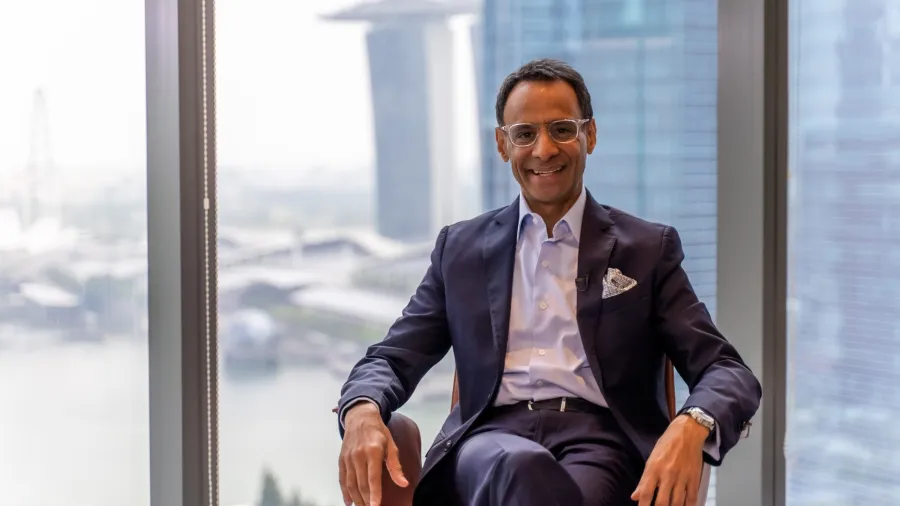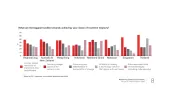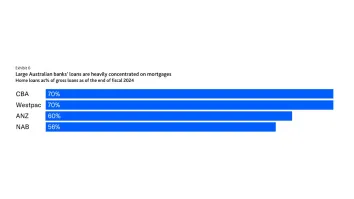
Talent & Tech at the heart of Munir Nanji’s mission to grow Citi Central Europe
He is tasked with implementing the "New" Europe Strategy and reap full benefits of growth.
Citi believes that it has cracked the code on how to tap into Europe’s areas of growth in order to boost the bank’s profits, capital, and workplace dynamics—all enclosed in its “New” Europe Strategy.
“Our strategy is going to be around ensuring that we leverage capital from the firm and allocate it to companies that are growing much faster,” said Munir Nanji, newly-appointed Central Europe Cluster Head and Citi Country Officer for the bank’s Czech Republic franchise.
The key to the strategy is talent allocation: making sure that Citi’s highly skilled workforce is distributed amongst its clusters that support Citi’s global operations and business. This is done by creating Centers of Excellence, Nanji told Asian Banking & Finance in an exclusive interview.
Nanji has his work cut out for him: he’s taking the helm at a critical time for Citi. Central Europe is expected to post strong growth of 4% in 2022, before slowing to 2.8% the following year. Nanji is tasked with ensuring that the bank reaps the full benefits of this growth by integrating the strategy. It’s a challenge he’s keenly aware of and eager to scale.
“If you look at the growth of Europe and Central Europe, the growth in GDP per capita is faster in central areas in Europe. So that's one proxy. The other proxy, if you look at the age dynamics, demographics, you got more younger people, the millennials, in Central Europe than in Europe. Then if you look at our businesses in central Europe, its contribution to the European P&L [profit and loss] continues to grow steadily fast,” Nanji said, on why they adopted the “New” Europe Strategy.
“So how do we make those markets the bedrock from an infrastructure standpoint? The ‘New’ Europe Strategy is about getting a bigger footprint within Europe, getting a bigger voice in the organization, ensuring we get the mobility of talent, we get the acceleration of fund flow, and we then we support our clients to succeed around Europe and the rest of the world,” he said.
It’s a job that Nanji is more-than-equipped to take on. Prior to his new role as Central Europe Cluster Head and Czech Republic’s new country officer, he was head of Citi's Global Subsidiaries Group (GSG) for the Asia Pacific. The GSG business provides institutional banking to the subsidiaries of the bank’s top-tier multinational clients.
As head of GSG APAC, the largest multinational business for Citi globally and the leading bank in Asia covering multinational clients, Nanji spearheaded a major talent allocation project: applying a differentiated coverage model.
Nanji led the GSG APAC to set up teams in three big hubs—Shanghai, Hong Kong, and Singapore—in order to more effectively manage its clients that have regional buying and decision-making capabilities. The three hubs were chosen as these were the places where C-suite organisations are based at.
A key point of the model is to put bankers and support teams in markets where Citi’s clients, both the multinational and large Asian firms, have manufacturing operations or are perhaps looking to scale into countries such as India, Thailand, and Vietnam.
Small and medium-sized clients were not left behind in the model. Citi and Nanji, in particular, looked into how they can industrialise their coverage model so that they can service them more efficiently.
The solution they arrived at was by leveraging technology and assigning a team of bankers who, through tech, accessed clients to provide them with the relevant service.
Regulation, network
Asian companies are investing a lot in the European Union (EU), especially in the industrial and automotive space. Munir would like to use his experience to support the Asian supply chains to connect with producers and buyers in Europe and as a two-way street channelling the European investors to the Asian region.
Talking about the differences between the two regions Munir said that the EU, as an economic entity, is a more regulated area compared to Asia which means some processes and the decision-making process could be slower sometimes. On the other hand, this regulation gives very clear guidance in many topics like open banking, which is important for the development of the banking sector. Also, free trade and labour mobility make Europe quite efficient and economical to leverage synergies across markets.
On the other hand, Asian markets have a structure that makes it easier to adopt new technologies which are again the engine of growth. In a more technologically-enabled environment like Asia, some decision making tends to be faster.
Despite differences, Nanji observed that the goals of companies remain the same across the two regions: conservation of capital and refining decision-making processes.
“In terms of decision making, a lot of these global companies are going more towards a bifurcated approach, [where they] have both global and regional decision making. But a lot of times they rely a lot on the decision making in the countries across Asia and Europe. And that's where I think the network business is so powerful for us at Citi because we then talk to the clients in these markets, but then we also talk to them at the head office levels,” Nanji said when asked about the similarities between the two markets.
Whilst he has never been a country head before, his multinational career has prepared him to take on the role, Nanji said. Before becoming GSG head, Nanji had worked in a plethora of markets across Asia and Europe: Kenya, Romania, the UK, Italy, Nigeria, South Africa, Hong Kong, Singapore and the Czech Republic.
He first began his banking career in his home country of Kenya, and notably helped set up Citi’s franchise in Romania, where he ran the middle market business and the transaction banking business for Romania and Bulgaria.
It’s a career that will serve him as he helps Citi achieve its three-year plan in Europe.
“Our targets are obviously on revenue growth, capital growth and talent development. And as we speak, we are bringing a lot of new talent into the business and we're pretty much set on the right foot to achieve that,” Nanji said.



















 Advertise
Advertise










